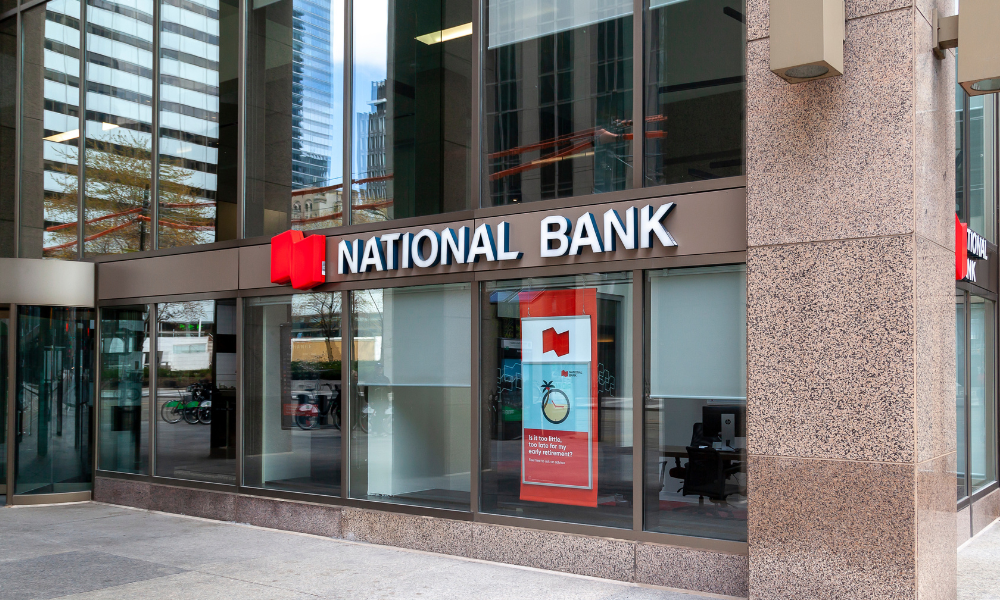Loan growth slows and trading gains offset pressure as Big Six prepare Q2 results this week

Canadian banks are expected to report significantly higher credit loss provisions for the second quarter as deteriorating economic conditions and trade-related uncertainty weigh on lending and investment activity.
As per LSEG data cited by Reuters, provisions for credit losses rose between 14.5 percent and 79 percent at the country’s six largest banks in the quarter ended April 30.
According to The Globe and Mail, higher borrowing costs and inflation have already pressured consumer and business debt repayment, prompting banks to strengthen reserves amid signs of growing financial stress.
Reuters noted that four of the six banks have already set aside over $1bn to shield against potential defaults, with large reserve builds expected despite remaining below pandemic-era levels.
As reported by The Globe and Mail, BMO is forecast to report a 49 percent jump in provisions alongside a 7.6 percent decline in earnings, due in part to its exposure to commercial lending.
TD, the only other bank expected to report a fall in profit, will likely post a 22 percent increase in provisions.
Reuters also noted that TD continues to manage regulatory constraints in the US following anti-money laundering penalties totalling US$3.1bn.
According to analysts at Scotiabank, the banks appear well-positioned to absorb losses despite the increase in reserves.
“We believe the group is as recession-ready as it has ever been,” analysts Mike Rizvanovic and Felix Fang wrote in a note reported by the Financial Post, citing improvements in tier-one capital ratios by roughly 200 basis points since the COVID-19 pandemic.
Royal Bank of Canada is expected to post the largest increase in net income at 11 percent, as per Reuters, with gains tied to its scale and the integration of HSBC Canada.
Read next: A guide to buying Royal Bank stocks with analysis and prices
Scotiabank analysts placed RBC at the top of their rankings, calling it a diversified and trusted name in the current economic backdrop.
Other banks are also under scrutiny for their near-term strategies.
According to the Financial Post, CIBC’s capital strength and history of exceeding earnings expectations may position it for further gains.
National Bank of Canada, while impacted by credit risks at its ABA Bank unit, could benefit from the acquisition of Canadian Western Bank.
Analysts see upside if markets reprice current concerns.
However, the outlook remains mixed. According to Scotiabank analysts, TD is “clearly at an inflection point” as it works to overcome strategic headwinds in its US retail operations.
Meanwhile, BMO continues to face investor uncertainty after missing earnings expectations in nine of the past 12 quarters.
Laurentian Bank, they noted, remains a “show-me story” as it navigates new strategic spending on technology.
As reported by The Globe and Mail, investors are closely watching how bank leaders assess the path of the economy and manage growing pressure on borrowers.
Jefferies analyst John Aiken stated that while all banks are expected to increase credit allowances, “it will be telling how the market reacts to those that are at the high and low end of the spectrum.”
Loan growth slowed in February, with Canada’s banking regulator signalling a pullback in consumer and business borrowing.
Reuters cited analysts saying that expectations for rate cuts had initially improved sentiment, but were quickly overshadowed by US President Donald Trump’s tariff-related policy shifts, creating fresh market volatility.
Canaccord analyst Matthew Lee, in a note cited by The Globe and Mail, said the quarter is likely to reflect “trading revenues demonstrating year-over-year strength,” offset by weak loan book growth and geopolitical volatility driving performing provisions.
Capital markets remain one of the few bright spots.
As per Reuters, trading volumes have remained strong across both Canadian and US banks due to market volatility, though investment banking remains muted.
Despite these headwinds, bank stocks have climbed 3.4 percent this year, as per The Globe and Mail, lagging the S&P/TSX Composite Index’s five percent gain.
The KBW Bank Index, which tracks US lenders, has risen 2.4 percent in the same period.
Bank earnings will be released throughout the week, starting with TD on May 22 and concluding with RBC and CIBC on May 29.
Read next: Is TD bank stock a good investment?



